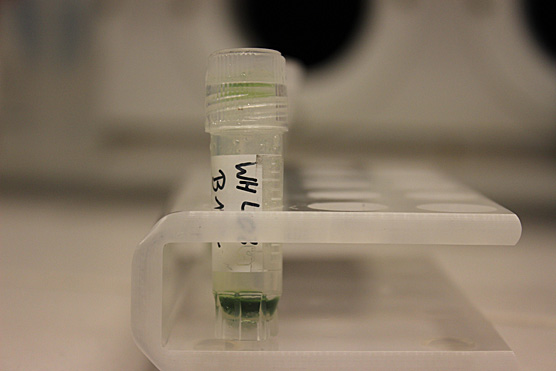Press release 2022-04-05 at 12:55
An estimated 50,000 tons of munitions containing chemical warfare agents have been dumped in the Baltic Sea. For her doctoral dissertation, Hanna Niemikoski, a researcher at the Finnish Environment Institute (SYKE) studied the accumulation of phenylarsenic compounds from the munitions in fish and other marine biota. She studied how the compounds change when metabolised by marine organisms and showed that the altered compounds have toxic effects on organisms. Niemikoski is defending her dissertation at the University of Helsinki on Friday, 8 April.
Munitions containing chemical warfare agents were disposed of after the world wars by dumping them at sea. In the Baltic Sea, the greatest quantities of munitions were sunk near the Danish island of Bornholm. An estimated 32,000 tons of ammunition lie there.
Chemicals from the shells are leaking into the surrounding sea environment. Little is known yet of how the compounds affect marine life.“Information on the accumulation of the compounds on marine organisms and on the transformations taking place in the compounds is needed if we are to be able to evaluate the environmental impact of the munitions”, Hanna Niemikoski says.
The focus of Niemikoski's dissertation study is on phenylarsenic compounds because of their high content in bottom sediments near the munitions, and they are believed to accumulate in the organisms.
Compounds change in fish metabolism
Hanna Niemikoski studied marine organisms, mainly fish, caught in three areas where chemical warfare agents are known to have been dumped.
Most of the samples, comprising 99 muscle samples from cod, were from the Bornholm area. Of the samples, 14 percent contained residue from phenylarsenic compounds. Similar results also came from samples in the Skagerrak and Måseskär areas. In addition to muscle tissue, samples were taken from the gills and bile of the fish in order to ascertain where the compounds accumulated in the organism. A total of more than 300 samples were analysed.
The study used in vitro models to examine how phenylarsenic compounds changed in the metabolism of fish. In addition, the toxicity of the primary metabolite was studied.“The metabolite was poisonous to fish. Compounds formed in the metabolism can be used to indicate that fish have been exposed to phenylarsenic compounds”, Niemikoski says.
Breakdown products of arsenic compounds were found in sediments at the sea bottom
In the dissertation decay products in the bottom sediments formed from phenylarsenic compounds were identified, which had not been previously observed in marine sediments anywhere in the world. Many of these compounds are of a kind that have never been reported to have been found in nature at all.
“It is likely that the compounds have been formed by the activity of microbes living in the marine sediment. The proportion of these in the arsenic compounds in the marine sediments could be significant”, Hanna Niemikoski says.
The results of the doctoral study help in evaluating the environmental risks caused by chemical weapons dumped at sea.“In the future it will be important to regularly monitor the accumulation of the compounds in marine life and to measure the content of the compounds in sediments. This gives us an understanding of the full load of arsenic on the ecosystem caused by the munitions”, Niemikoski says.
The dissertation was produced at Verifin, the Finnish Institute for Verification of the Chemical Weapons Convention at the University of Helsinki’s Department of Chemistry.
Further information
Hanna Niemikoski, Master of Science, Researcher, Finnish Environment Institute SYKE
Tel. +358 29 525 2173, firstname.lastname@syke.fi
Hanna Niemikoski defends her dissertation at the Faculty of Science on Friday, 8 April 2022 at 12:00. The language of the event will be Finnish
Address: The University of Helsinki, Kumpula Campus, Hall Exactum CK112, Pietari Kalmin katu 5, 00560 Helsinki
The event can also be watched on video
(University of Helsinki virtual events)
Doctoral dissertation: New approach in the assessment of impact of arsenic-based chemical warfare agents on marine environment

Hanna Niemikoski studied the bioaccumulation of phenylarsenic chemicals in different marine biota species. The bile samples from cod caught in the Bornholm area are shown in the picture. © Hanna Niemikoski